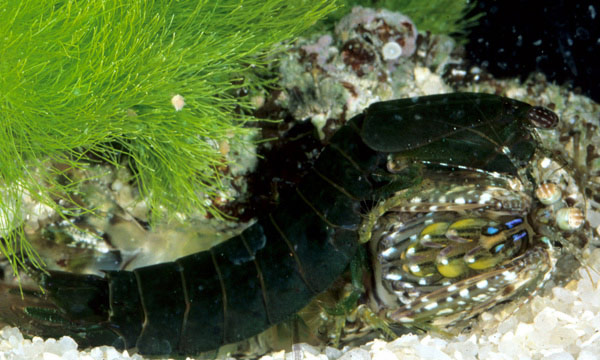You are what you eat (Interactions/Nutrition)
Pseudosquilla ciliata are generalists; they are able to prey on a wide variety of nutrients (Caldwell, 1988). Because this species is larger than most mantis shrimp and they obtain a powerful feeding appendage, they can eat almost any aquatic species including small fish, shrimp, crabs, annelids, and they are even able to prey on other species of mantis shrimp (deVries, 2010). Living in a wide range of different aquatic habitats, allows P. ciliata to be able to have the opportunity to benefit from many different prey (Caldwell, 1988).
The following information in this
paragraph is from an article by Patek, Korff, and Caldwell in 2004.
Organisms who spear their food usually spear it and hold it by the
spine.
In the video below, you can see a P. ciliata capture a shrimp.
Lastly, we retrieved all of the information in this paragraph from an
article from 1971 written by Hazlett. Pseudosquilla
written by Hazlett. Pseudosquilla
ciliata to be most successful in capturing their prey to stay alive. To be successful in capturing their prey, this species must wait for the water to be in low tide before going out to hunt. Because Pseudosquilla ciliata are prey to larger fish, waiting to hunt when it is low tide gives the Pseudosquilla ciliata a much better chance of surviving. Pseudosquilla ciliata wait in their burrows until it is low tide and then they go out and spear organisms which they are then able to ingest and then digest. If the prey is too big for them to quickly eat in the open, captured prey may be brought back to the burrow where it is further cut up and eaten.
Pseudosquilla ciliata are one of the most
predatory mantis shrimp known to human, but they are still among the
most aquarium dominant organisms (Campell, 2012). Stomatopods are not
commonly eaten today; but because of their bright colors and
attractiveness to the eye, people love to have them in their homes
(Campbell, 2012).